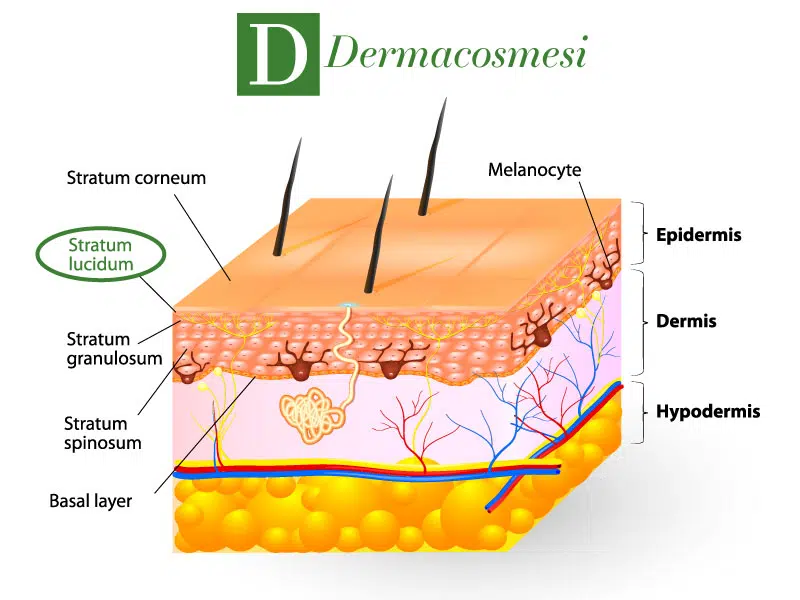The stratum lucidum is part of the 5 layers of the epidermis respectively:
- stratum basale or stratum germinative,
- stratum granulosum,
- Stratum spinosum,
- stratum lucidum,
- stratum corneum.
Contents
The stratum lucidum of the skin: where it is found
The stratum lucidum is an intermediate layer that lies between the stratum granulosum and the stratum corneum and is very thin.
The stratum lucidum of skin is found in areas of the human body that experience friction
It is found in certain areas of the body precisely on the palms of the hands, and on the soles of the feet in areas that experience friction.
The name ‘lucidum’ derives from its cellular composition
The name lucidum comes from the cells present, which have the characteristic of being translucent.
The cells that make up the shiny layer of the dermis
The stratum lucidum is composed of four types of cells:
- keratinocytes
- melanocytes
- Langerhans cells
- Merkel’s cells.
Eleidine: the substance that refracts light and prevents tanning in certain areas of the body
In the cytoplasmic portion, in the centre of the cells, a substance called eleidine with an oily appearance abounds. Eleidine is a lipoprotein, rich in lipids and sulphur, which refracts light and prevents tanning there.
In the cell periphery, on the other hand, we see the horny transformation, the cells lose their nucleus, die, flatten out and migrate to the most superficial layer: the stratum corneum.
The stratum lucidum and its fundamental function
The main function of the shiny layer is as a transition between the stratum granulosum and stratum corneum, a gradual transition between a living layer and a dead layer.
The cells gradually undergo keratisation and cell death.
